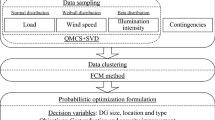Abstract
Power-saving has become a central issue for well-configured SOC platforms. In particular, as a high percentage of the total energy is used by the storage systems, the cost effectiveness of data management is equally as important as reliability and availability. To address this issue, we propose the dynamic grid quorum as a method for reducing the power consumption of large-scale distributed storage systems. The basic principle of our approach is to skew the workload toward a small number of quorums. This can be realized using the following three techniques. First, our system allows reconfiguration by exchanging nodes without any data migration, so that high-capacity nodes can be reallocated to busier quorums. Second, for more effective skewing of the workload, we introduce the notion of dual allocation, which makes it possible to consider two distinct allocations in the same grid for write and read quorums. Finally, we present an optimization algorithm to find a pair of a strategy and an allocation of nodes, which minimizes power for a given system setting and its workload. We also demonstrate that the dynamic grid quorum saves, on average, 14–25% energy compared with static configurations, when the intensity of the total workload changes.
Similar content being viewed by others
Explore related subjects
Discover the latest articles and news from researchers in related subjects, suggested using machine learning.References
Agrawal D, Abbadi AE (1991) An efficient and fault-tolerant solution for distributed mutual exclusion. ACM Trans Comput Syst 9(1): 1–20
Cheung S, Ammar M, Ahamad M (1992) The grid protocol: a high performance scheme for maintaining replicated data. IEEE Trans Knowl Data Eng 4(6): 582–592
Colarelli D, Grunwald D (2002) Massive arrays of idle disks for storage archives. In: Proceedings of the ACM/IEEE conference on supercomputing, pp 1–11
Frain I, Basmadjian R, Bahsoun JP, M’zoughi A (2006) How to improve the scalability of read/write operations with dynamic reconfiguration of a tree-structured coterie. In: Proceedings of the international conference on parallel processing workshops, pp 123–134
Fu A (1997) Delay-optimal quorum consensus for distributed systems. IEEE Trans Parallel Distrib Syst 8(1): 59–69
Gifford D (1979) Weighted voting for replicated data. In: Proceedings of the ACM symposium on operating systems principles, pp 150–162
Harnik D, Naor D, Segall I (2009) Low power mode in cloud storage systems. In: Proceedings of IEEE international parallel and distributed processing symposium, pp 1–8
Ibaraki T, Kameda T (1993) A theory of coteries: mutual exclusion in distributed systems. IEEE Trans Parallel Distrib Syst 4(7): 779–794
Ishikawa M, Hasebe K, Sugiki A, Kato K (2009) Dynamic grid quorum: a novel approach for minimizing power consumption without data migration in grid quorums. In: IEEE international conference on service-oriented computing and applications (SOCA’09), pp 142–149
Li D, Wang J (2004) EERAID: energy efficient redundant and inexpensive disk array. In: Proceedings of the ACM SIGOPS European workshop, 6 pages
Lin X (2004) Delay optimization in quorum consensus. Algorithmica 38(2): 397–413
Maekawa M (1985) A \({\sqrt{n}}\) algorithm for mutual exclusion in decentralized systems. ACM Trans Comput Syst 3(2): 145–159
Peleg D, Wool A (1997) Crumbling walls: a class of practical and efficient quorum systems. Distrib Comput 10(2): 87–97
Pinheiro E, Bianchini R (2004) Energy conservation techniques for disk array-based servers. In: Proceedings on international conference on supercomputing, pp 68–78
Pinheiro E, Bianchini R, Dubnicki C (2006) Exploiting redundancy to conserve energy in storage systems. In: Proceedings of the joint international conference on measurement and modeling of computer systems, pp 15–26
Tanenbaum AS, Steen MV (2002) Distributed systems principles and paradigms. Prentice Hall, Upper Saddle River
Tsuchiya T, Yamaguchi M, Kikuno T (1999) Minimizing the maximum delay for reaching consensus in quorum-based mutual exclusion schemes. IEEE Trans Parallel Distrib Syst 10(4): 337–345
Wang J, Zhu H, Li D (2008) eRAID: conserving energy in conventional disk-based raid system. IEEE Trans Computers 57(3): 359–374
Weddle C, Oldham M, Qian J, Wang AI, Reiher P, Kuenning G (2007) PARAID: A gear-shifting power-aware RAID. In: Proceedings of the USENIX conference on file and storage technologies, pp 245–260
Yao X, Wang J (2006) RIMAC: a novel redundancy-based hierarchical cache architecture for energy efficient, high performance storage systems. In: Proceedings of the ACM SIGOPS/EuroSys European conference on computer systems, pp 249–262
Zhu Q, Chen Z, Tan L, Zhou Y, Keeton K, Wilkes J (2005) Hibernator: helping disk arrays sleep through the winter. ACM SIGOPS Oper Syst Rev 39(5): 177–190
Author information
Authors and Affiliations
Corresponding author
Rights and permissions
About this article
Cite this article
Ishikawa, M., Hasebe, K., Sugiki, A. et al. Dynamic grid quorum: a reconfigurable grid quorum and its power optimization algorithm. SOCA 4, 245–260 (2010). https://doi.org/10.1007/s11761-010-0069-0
Received:
Revised:
Accepted:
Published:
Issue Date:
DOI: https://doi.org/10.1007/s11761-010-0069-0




